‘Viking women’ is the term that is usually used to refer to the Norse women who lived during the Viking Age. Now, people know that they usually held more power and responsibility than most women of other civilizations of the time. They were farmers, businesswomen, seers, priestesses, and even in some cases warriors. They ran the household and the farm in an efficient manner in the absence of their menfolk. However, despite all their freedom, they were still women living in a patriarchal society. The difference in status between them and their men was still quite vast.
Table of Contents
Who Were the ‘Viking Women’?
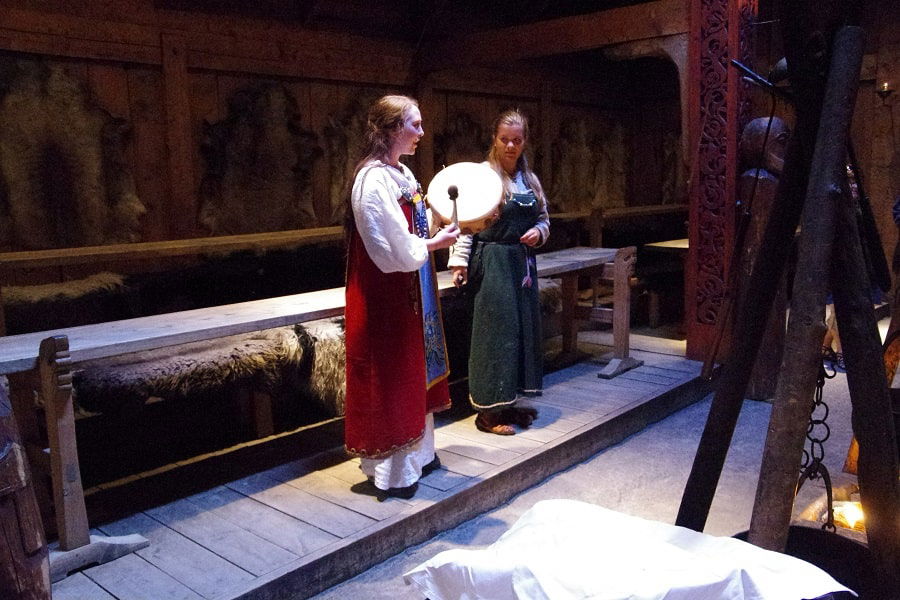
‘Viking women’ is an expression that is commonly used now. But it is actually an inaccurate one. There were no ‘Viking women’. ‘Viking’ or ‘vikingar’ was the name given to Scandinavian raiders and pirates. These men left the Scandinavian shores in their longboats and sailed to places like Europe, Russia, Britain, the North Atlantic Islands, and North America to plunder and loot the people of those lands. Women did not typically accompany the men on such raids.
However, the purpose of these raids was not always to loot and plunder. The Vikings were accomplished seafarers and traders. Thus, they set up trade routes all over the Atlantic and established settlements, towns, and cities in various parts of Europe and North America. When they sailed to these settlements, there is evidence that shows that they were accompanied by women. Norse women joined their husbands and fathers in Iceland, the British Isles, and the Orkney Islands. They populated these lands and lived on them. Traces of Norse language and ancestry are very common in the people of these areas today.
Thus, strictly speaking, there were no Viking women. But today, ‘Viking’ is the word that we use to describe the people, culture, and lifestyle of the Scandinavian lands between 800 and 1100 CE. The era is often known as the Viking era and the Scandinavian women of that time period are the Viking women.
Home Life of Viking Women
Viking society, like most civilizations throughout history, was a patriarchal system. The men were the ‘lords’ of the household. Whatever information we have about the Vikings, most of it is about the men. When it comes to women, their home life, their professions, their day-to-day activities, and their belief systems, we have to piece together bits of history to get the complete picture.
Fragments of ideas and stories help us build a portrait of the women of that time. What were their lives like? What laws and rules governed their rights? What did they wear? What did they eat? What did they do while the men were away?
Viking Women at Home
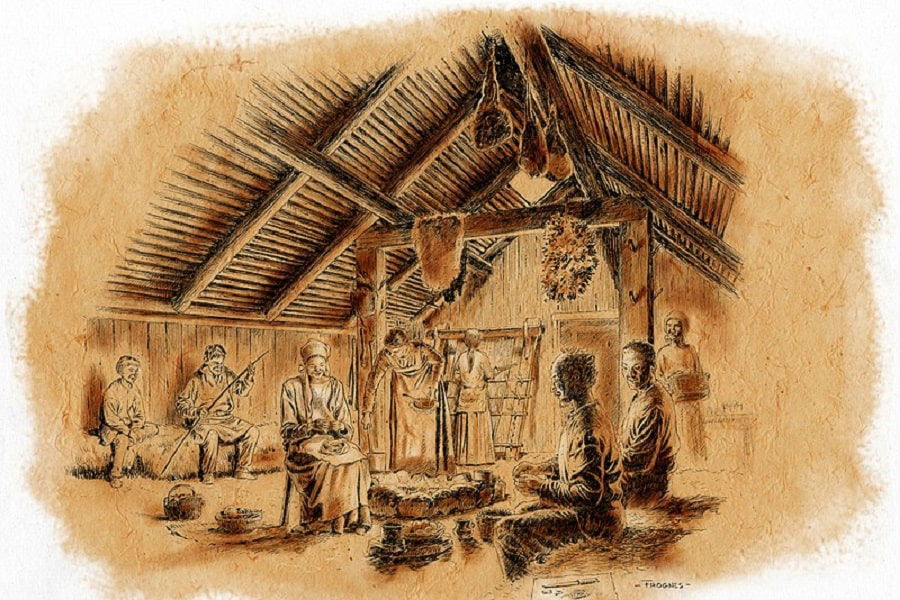
History has given us a skewed idea of the importance of the household and regular homely tasks. Often written by men, history has for many centuries failed to grasp the significance of how women hold society together. The home is the first step in society, after all. And it has traditionally been the province of women. We pay so much more attention to warrior women and the outliers that we forget the mothers and wives. These were the women that built society and held the family together. So was the case with the Viking women.
Nominally, the man was the head of the household in the Viking age. But women played a huge role in running the house and even managing their husbands. The Norse people were a largely rural and agrarian society. They also had homesteads and raised animals. This meant that there was plenty of work at home for the women and the men. Men typically worked in the fields since it was harder work while the women raised animals.
However, when the husband was away on his longboat for weeks and months on end, the Viking woman had to take care of all aspects of the household. They managed the running of the farm or the trading business singlehandedly while also taking care of the house.
The Viking longhouse was the center of activity. It was a single-room apartment with a log fire in the middle and benches for sleeping along the sides. The Viking women cooked, cleaned, sewed, and took care of elderly relatives, children, guests of honor, and foster children. They were entertainers and storytellers. Many of the Norse sagas and tales that have survived were oral ones, told by women around the home fire.
Many Viking women were buried with rings of keys. This signified their roles as the managers of the household and their sphere of authority. Widowed Viking women managed the house, farm, and business on a permanent basis. This was a common occurrence since many Viking men died young while traveling or fighting.
Clothing and Hair

What did Viking women wear? The Norse people lived in cold and harsh lands. The wintry temperature meant that the first function of clothing was warmth. Since they also did a lot of work, their dresses had to be practical. We might think that this meant they were gray and gloomy, to match their surroundings. But historians believe that the clothes of Viking women may well have been very bright and colorful.
Archaeological evidence recovered from female graves seems to indicate that most Viking women made their clothes at home. They would have consisted of floor-length linen underdress with a slightly shorter woolen overdress. The two would have been held together with straps and iron or bronze brooches. Heavy cloaks were worn when going outside in the cold. The clothes were dyed with natural local dyes and dyes earned from trade. Noble women even wore oriental silks, for which they traded at big trading hubs like Birka in Sweden.
The most common kind of jewelry worn by the Viking women were brooches and necklaces. They did not have piercings and did not wear earrings. While Viking braids have become an accepted idea today because of popular media, the women most probably wore their hair in ponytails. There would be a knot at the base to keep it from becoming untidy.
Slave women, on the other hand, wore lower-quality clothing than free women. If they were the concubines of the men, they might be gifted higher quality clothing and jewelry than the wives. They did not own these items, however. They belonged to the jarl or king who owned the concubine.
Jarls and Thralls
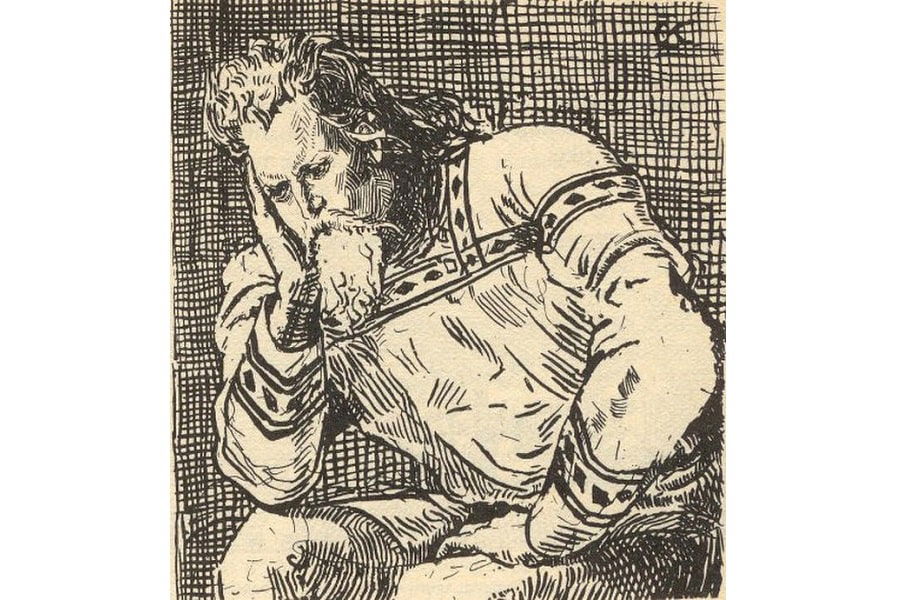
Taking thralls or slaves was a common custom during the Viking age. The three levels of hierarchy in their society were: Jarls (the nobility and rich landed upper classes), Karls (the free middle classes with less wealth), and the Thralls (slaves).
A Jarl woman enjoyed a much easier life. She would have servants and thralls to carry out the daily work. She would have been able to manage the finances of the household herself. Since Viking women were allowed to hold property, she would also have been able to manage her own lands and wealth. She would have given the orders around the house. The more land a family had, the more elevated their position was.
Thralls did not own anything and had no say over their time. Female thralls usually helped in farm work, took care of the animals, and did the cleaning and cooking around the house. As for concubines, their lives were easier but they too lived at the whim of their owners, the male Jarls.
It was possible to earn your freedom. Thus, the thralls had an incentive to work hard. However, freedom was not guaranteed. Sometimes, thralls would be buried with their owners after working for them all their lives.
Laws Related to Women
Viking history is fascinating in that they had very specific laws and rules about their women. Women in the Viking Age enjoyed a remarkable amount of equality. Viking women could own property, take lovers outside of their marriage, divorce their husbands, and have professions.
Marriage and Divorce
Viking women married at a young age. Girls were married off between the ages of 12 to 15. However, this did not mean that they had no say in the arrangement. The family arranged the marriage and negotiated contracts. These contracts would determine how the family property would be divided in the case of a divorce. Men also bought their wives and lovers necklaces to signify their own wealth.
A Viking woman also had the right to divorce her husband in case of abuse or sudden loss of wealth. The woman would call witnesses to her home and marriage bed and declare that she had divorced her husband in front of these witnesses. The man had to return the woman’s dowry in case of a divorce. Jarl women had more freedom in this matter. While a Karl woman was also entitled by law to leave her husband, she often did not have enough property or means to support herself.
Some records show that a free woman could become a man’s lover and give him children without getting married. This was not considered concubinage but was still quite rare. Such women would not have the same kind of rights to their lover’s property as wives would. But the children born of these relationships could be claimed as legitimate heirs by the man. The man could only bring his lover into the household if his wife allowed it.
In the Viking age, widows got their husband’s property and wealth after their deaths. They had full authority to manage the land and riches as they saw fit.
Rights and Equality
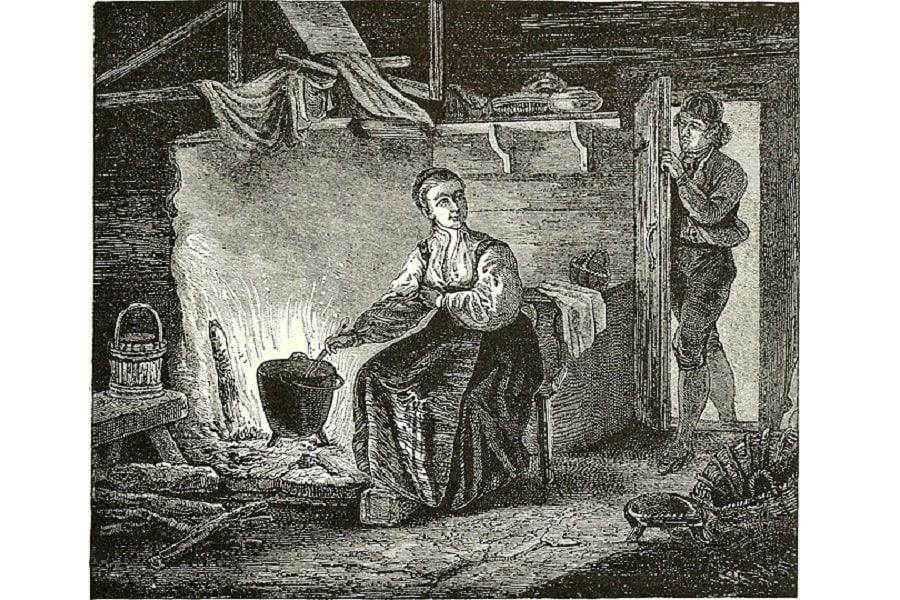
Women in the Viking age were not quite equal to men. They could not appear before a court and present their case. However, in some cases, they did enjoy some rights and powers that put them on a more equal footing. The right to own property – both the father’s and husband’s – meant that women had some degree of independence.
Archaeological analysis of the bones and teeth of Viking women and men shows that they enjoyed the same degree of health and nutrition. Teeth enamel and femur lengths were seen to be about the same for men and women. This shows that there was no child malnourishment. Young girls and women received the same amount of food as boys and men did. This was not always the case with primitive societies, which often valued young male warriors much more than women.
Of course, we cannot know how girls and boys were thought of in the Viking age and whether they were treated differently. But the very fact that women had a range of professions available to them, got elaborate burials and were depicted as strong and powerful figures in sagas seem to hint that they were valued. If not quite equal to men, they were not completely submissive.
Professions of Viking Women
Women enjoyed several different professions and careers in Viking Age Scandinavia. While most noble and free women were householders and landowners, there were also female traders and women employed in various crafts.
Craftswomen and Business Women
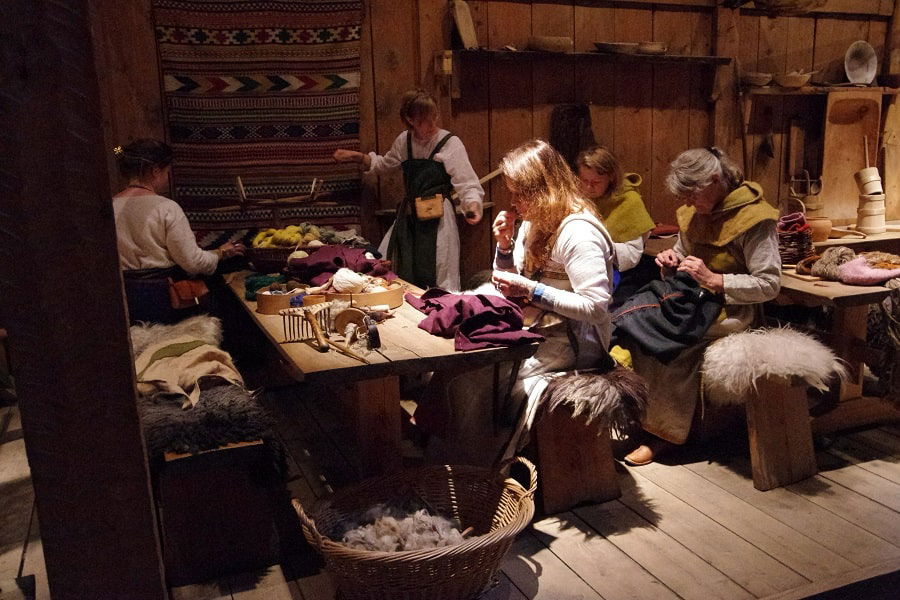
In Viking culture, most homesteads were isolated and self-sufficient. However, there were also some trading centers where several families lived together. These were more lively and busy than their rural counterparts. These centers were Birka in Sweden, Kaupang in Norway, Ribe in Denmark, and Hedeby in Germany. The women here may very possibly have engaged in trade and commerce.
We often discover what the Viking women valued and used by the items found in their graves. In the rural areas, women were often buried with spindle whorls. However, in these urban areas, female graves contained scissors, tweezers, needles, coins, scales, and merchant’s weights. All of these things hint at the fact that these women did fine sewing and took care of businesses. Some carpentry tools have also been found and historians conclude that some of the Viking women might have had carpentry skills and known how to make jewelry.
Grave goods of this sort have been found in the urban centers in Scandinavia as well as in the Viking territory of Russia. This may indicate that the Viking women worked as traders and merchants as well. Of course, the grave goods are not conclusive evidence of that. It could simply be an indication that the woman belonged to a merchant family. We have very little information about Viking culture a thousand years ago and historians and archaeologists can only make some informed guesses.
Even if the women did not run businesses and trade, it is undeniable that the Viking women were competent at craftsmanship. Apart from their own clothing and jewelry, which they were forced to make themselves, they could probably make and fix little things around the farms. After all, they had no male help during the summers, when the men were away for months.
What we can assume is the women in the trade centers had more contact with the wider world than the women in the rural areas. They would interact with people from various places and were also the ones that were first introduced to Christianity, long before the widespread Christianization of the Norse people. An account tells us of the conversion of a rich widow named Frideburg and her daughter Catla by a Christian mission in the 9th century. The two then traveled to Frisia in Germany to settle there.
Seers

Some Viking women were regarded as seers or sorceresses. Called volva, they would practice a particular kind of magic called seid. The seers were thought to be priestesses who were a link between humans and gods. Odin himself was believed to have visited a volva to learn of the past, present, and future. They were called volver (a plural form of volva) because of the staff (volr) that they carried.
This kind of staff, sometimes made of iron, has been found in the graves of several Viking women. 40 such graves have been discovered, most of them filled with riches like chairs, carts, weapons, amulets, feathers, and bones from birds, herbs, and even the bones of horses and dogs. This seems to indicate that a volva belonged to the upper echelons of Viking society.
The men needed seers to tell them of their future, in the case of battles and crop yields. These seers would use various ingredients in their practice of magic. The liquid from a snake, called eitr, was thought to be very useful. The Norse people believed that eitr produced all living beings. Seers also used fire and dew from their sacred trees that represented their mythical Yggdrasil tree. These substances helped them in their rituals to see the future, read patterns and shapes, and interpret what would happen.
Shield Maidens
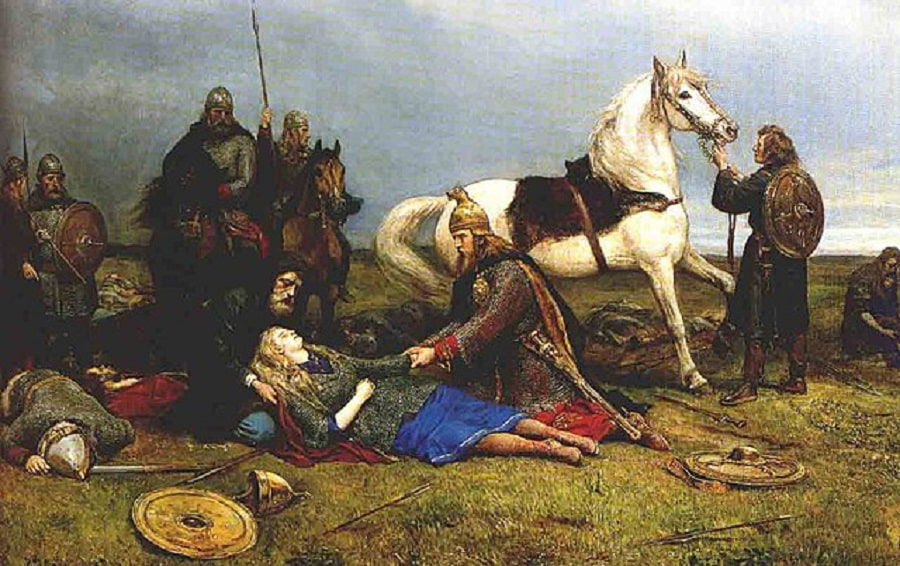
Viking is a term associated with warriors. When we read about history’s most famous Vikings, it is usually only male names that we come across. Female Viking warriors, called skjoldsmøyer or shield maidens, are rare. In modern times, because of certain sagas, books, films, and television shows, we are under the assumption that warrior women were common among the Vikings. This was not the case.
There were some female warriors. A name that is commonly known is Freydis Eiriksdottir. Lagertha, made popular by the television show Vikings, was another such female Viking warrior. However, most of these accounts of shield maidens come from popular Norse sagas, which were for the most part fictional. Very little evidence has been found that women commonly went to war. Even graves found with weapons buried in them are not convincing enough for historians and scholars.
Very few women actually became shield maidens. It was nowhere near as commonplace as films and television shows make it out to be. The Birka grave, for example, caused great controversy when archaeologists and historians started debating whether it was for a male warrior or a female warrior.
However, even if they did not act as shield maidens, some women did accompany their men on their voyages. Large parts of northern Britain and the islands in the Atlantic Ocean were settled by the Norse people. Settling the unpopulated, barren lands would have taken immense hard work and determination. Thus, these settler women may not have been warriors in the strict sense of the term. But they certainly had a warrior-like spirit.
Death and Funerals

A lot of information about Viking society is gained from burials and the grave goods found in these graves. Since the Vikings did not leave behind any written records and the Greeks and Romans did not write about them either, we have to come to our conclusions from archaeological evidence. This is where graves come in.
A Viking warrior was usually buried with a large number of things, from ships and an array of weapons to riding equipment and horses. Female burial sites, on the other hand, usually contained brooches, necklaces, keys, and household items. An interesting difference between the two is the richness of the goods. With men, the richness of the goods decreased with age. With Viking women who were aged between 40 and 60 years had the richest burials. Thus, their status rose with age.
One of the most famous female graves that have come to light is of the Birka female Viking warrior. A 10th CE chamber grave contained weapons like a sword, ax, spear, arrows, battle knife, and two shields as well as a stallion and a mare. The body was found collapsed from a seated posture and wore silk garments with decorations of silver thread. When the discovery was made in the 1870s, It was assumed that the body was male.
A hundred years later, further studies showed that the skeleton belonged to a woman. This led to theories that the grave and skeleton were those of a high-ranking warrior woman from the Viking period. Analysis of the weapons showed that they were not simply ceremonial and had been used by a trained combatant. Scholars pointed to the Viking and Icelandic sagas of powerful women who were trained in warfare and fought alongside their men.
Scholars and historians have contested the idea that the woman was a warrior. They have pointed out the possibility that the bones were mislabeled or that bones from another grave may have found their way into the chamber grave. There could be various reasons that a female skeleton was found in a warrior’s grave, including the fact that she may have been his thrall.
It would be premature to conclude that she was a warrior simply because of the weapons she was found with. Other graves with weapons inside have been discovered, featuring the skeletons of women as young as 18 to 20. Those women might have been sacrificed to accompany the deceased person to the world of the dead.
The richest of the female burials is the Oseberg ship burial from 834 CE. There were two women buried in the Oseberg ship. The oldest was around 80 years at the time of her death. Historians first speculated that she was a figure of massive importance, perhaps a queen. Often called the Oseberg queen, people thought she may have been the grandmother of Norway’s first king, Harald Farihair. They thought that the youngest was about 50, belonged to a lower class, and may have been a sacrificed slave.
Recent research shows that the above assumptions were wrong and one or both of the women may have been volver (the plural form of volva). The burial goods included a staff or a horn, a beautifully carved cart used for religious purposes, a tapestry depicting such a procession, a rattle, four animal head posts, chairs, a peacock, feathers from a pillow, and seeds of cannabis amongst the feathers. These items seem to hint at religious and mystic purposes.
Viking Women in Literature and Mythology
Norse mythology and Old Norse literature from the Viking age are absolutely fascinating. Apart from the Norse gods and goddesses, there are stories about various heroes, warriors, and creatures. The most famous of these are the Icelandic sagas that were later collected and compiled in written format by Snorri Sturluson.
Alas, women poets were few and far between. In known history, only four women were named skalds or poets by the Vikings. These were Gunnhild kongsmor, Hild Rolfsdatter, Jorunn Skaldmøy, and Steingunn. Perhaps this was because poetry was seen as a masculine activity as the god Odin had taught men how to make poems. But many women were subjects of these poems and sagas.
Valkyries

The Valkyries of Norse mythology were the maidens that brought warriors to Valhalla. In the Viking age, the greatest death was in battle, since that guaranteed automatic entry into the heavens. The Valkyries were female warriors who would search the fallen on the battlefield for those worthy enough to enter Valhalla. The worthy would stand beside the Norse gods at the time of Ragnarok.
It is possible that Valkyries may have been based on actual female warriors. Certainly, we cannot speak of Viking women without mentioning the fierce ‘choosers of the slain.’ But it is much more likely that they, like the warrior maidens in the sagas, were only a reflection of what the Vikings admired.
Sagas and Norse Poems
Some Viking-age women went to war just like their male counterparts. These were a select few, who were probably forced by circumstances to defend themselves from attack. Freydis Eiriksdottir, the most well-known of these women warriors, has been mentioned in several historical sagas.
The daughter of Erik the Red and sister to Leif Eriksson, she followed her brother’s journey to Vinland in North America. Once there, she took possession of the settlement and structures that her brother had built and outwitted several men in her retinue. In another version, a pregnant Freydis bared her swollen stomach and fought off assaulters with a sword. She is depicted as both a heroic warrior and mother and a treacherous schemer. This is a common dichotomy that men apply to women, across cultures, so perhaps it is not surprising.
Gudrid Thorbjarnardottir was another woman who appeared in the Vinland Sagas. She was depicted as an explorer and voyager, sailing to Greenland with her father and Vinland with her husband. Sigrid the Haughty, like Freydis, appeared in various sagas. She is said to have given birth to King Olaf the Swede and ruled as a wise dowager queen for several years.
Aud the Deep-Minded was the wife of a Norwegian Viking called Olaf the White. After the death of her husband and son, she took a ship and sailed to Iceland. She took control of much of the land there and her retinue became some of the first settlers of the island. Olga of the Kievan Rus ruled a portion of Eastern Europe that had alliances with the Vikings. She was the Queen Regent after her husband’s death and before the coming of age of her son. She was also pivotal in transitioning the area to the Christian religion.
Finally, Lagertha was one of the most famous Swedish shield maidens. It is unclear if Lagertha was a historical figure or an embellished character from a number of stories. Her story was given to us by Danish historian Saxo Grammaticus. Lagertha was supposedly a shield maiden who was greatly coveted by a man called Ragnar Lothbrok. He asked her to marry him and she set a bear and a dog outside her door as protection. Ragnar killed both animals before making her his wife. It’s a rather dark tale and we have no idea if it’s a true one.
Most historians do not consider the sagas about female warriors a credible source. Like the mythologies of other ancient civilizations, the tales provide an insight into the minds of the Vikings, their culture, and their beliefs. But there is no hard proof that they were true. These women may have existed and done the things they are credited with. But until more convincing evidence is presented, historians treat them as fascinating stories and nothing more.